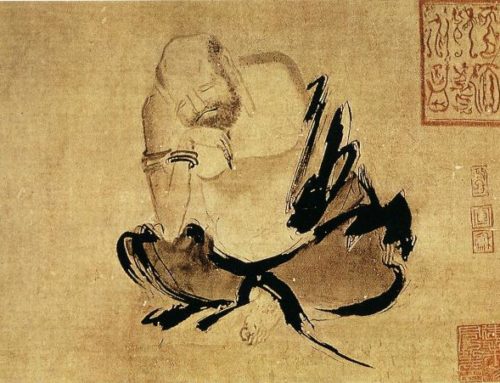So now that you’ve been inspired to try your hand at social content marketing, and you understand your audience and what kind of content may appeal, its time to plan out your content mix. Understanding the content mix that works for your audience is incredibly important and many companies get this very wrong. I break content down to four very general categories:
PRODUCT
Product type content is the stuff that most people understand as self-promotional.
If you are doing content for a cosmetic company, its the scientific study that shows a 25% reduction in crows feet. If you are doing content for a rock band, its posting the concert dates and new singles. If you are doing content for a dental office, its posting the specials on cleaning and whitening. If you are doing content for your consulting business, its posting where you are featured as an expert in the Washington Post.
- These are posts about your product itself: the features, the benefits, the comparisons and the contrasts.
- Its the who, what, when, where and how of what you are selling.
Product posts are the “me, me, me” posts. They are the ones that most resemble the traditional marketing one-way message, though many companies are trying to create interaction with these by adding a sharing, liking or commenting incentive share to enter a contest, like to get a coupon, comment to let us know how you would wear this, etc.
However, a content schedule made up of too many of these posts will not be interesting to anyone other than already devoted fans – and even they will be less and less interested as time goes on.These types of posts are essential for communicating what it is you are selling, where people can buy it, how they enjoy/use your product, when it is available or goes on special, who is behind the product slightly crosses over to brand, which explain why people should buy your product.
BRAND
Brand type posts still relate to your product, but focus more on the “why” by empathizing with your audience and connecting with them on a more emotional level.
Brand posts answer the question, “Why would YOU give a damn about my product?“
But they don’t list the features and benefits, they talk more about the customer and how they serve the customers needs. This is where the content gets social. It listens and learns and evolves with the needs of the audience. Brand type posts are answering how you are making your customers’ lives simpler, less confusing, less alienating, more efficient, more meaningful and just plain better.
If you are doing content for a fashion retailer, this is where you focus on the outcomes of looking and feeling great wearing the clothes quite often done visually and in a fantasy setting. If you are doing content for a public figure, this is where you showcase the issues and ideologies that people can connect with in order to support that person. If you are doing content for a sports team, this is where you can connect with the audiences competitive instincts, providing tools to help them show their team colours. Brand type posts speak of how the customer connects to the product rather than the awesomeness of the product itself. These posts evolve over time as you interact with the audience. They can even help you improve your product. This will give your audience a feeling of personal investment in the product, which will lead to a deeper relationship and long-term loyalty.LIFESTYLE
Lifestyle type posts don’t directly relate to your product, but they do speak to your audience. They are posts that recognize memes, holidays, current events and pop culture. These posts connect to your audience by recognizing what else is going on in their minds and show that your company gets the audience.
When Oreo posted the gay pride cookie, the image went viral because of many factors, but the biggest was that they took a risk. Oreo took a risk with a holiday that divides many (as gay rights is widely contested), leading to a wide number of supporters and detractors discussing and sharing the ad. The image itself was fairly innocuous with the rainbow colour filling between the iconic chocolate wafers and the word ‘PRIDE’. It didn’t say, “support gay rights” or stand up for anything in particular, but a family focused company giving any recognition to the gay community was enough to set the right wing audience off, which led to setting the left wing audience off to counteract the ire. The next thing you know, a cute, sleeper campaign turned into national news and Oreo cookies were top of mind for people again.Lifestyle type posts are simple to fall back on. There are several sites online that list all sorts of fun holidays (i.e. Talk Like a Pirate Day on September 19, or Best Friends Day on June 8) that could tie back to your product easily or creatively or speak to your particular audiences.
However, don’t overdo these as they could start to look like desperate attempts at content ideas and pandering.
Memes can be a clever way to connect with your audience, but make sure the memes are known enough and current. A ‘yesterdays’ meme will make you look out of date (posting a Harlem Shake video today, for example) and a too obscure meme may go over the heads of your audience and may offend. Many brands do well aligning to pop culture, but be careful with the rights to images.
Unless you can be creative about it like Oreo (without looking like a copy cat), it’s probably best you keep these posts a small percentage of your content. Occasional Lifestyle type content posts will pack a good amount of punch if you post them sparingly. They tend to get shared quite widely.COMMUNITY
Community type posts focus on your customers and audience. These content posts highlight customer stories, ideas, feedback and lifestyles. An example of a community post for a fashion retailer would be street style photographs where their customers talk about what they bought and what they are wearing.
Many cosmetic brands will hold contests for their audience to do makeup tutorials. Mac did a wonderful ‘Face Off’ campaign for Halloween in 2012 where they posted some amazing Halloween makeup tutorials and invited budding makeup artists to submit their own. The results were incredible.
Community type posts are very good at involving your customers in the future of your brand, but don’t get too complex. Community type posts most likely won’t be your most shared or liked post, but they empower your customers to be involved with your brand, which is important for relationship building.THE CONTENT MIX
These four classifications aren’t black and white. A product post can have lifestyle and brand type elements. Community posts can also be brand. The mix also varies depending on your audience and your own goals.
And remember, these four classifications outlined are very top level and only to be used as a guideline for your initial content planning. As your content evolves, you will break down types of posts even more finitely. When assessing content, we look at the type of post and the type of content of each post to determine how to adjust and balance going forward.
Starting with these four types of content will be a good exercise to get you started. From there, you should let your audience and their engagement and feedback determine how it evolves. Your content planning will move from a daunting, laborious task to a fun and learning experience.
The overall purpose of content marketing is to build and connect with your audience, get feedback to improve your product, grow loyalty though involving your customers in your evolution and then help your loyal, loving audience spread the word for you, bringing in a larger audience. Ultimately, this leads to you being top of mind and increasing your sales or supporters.




